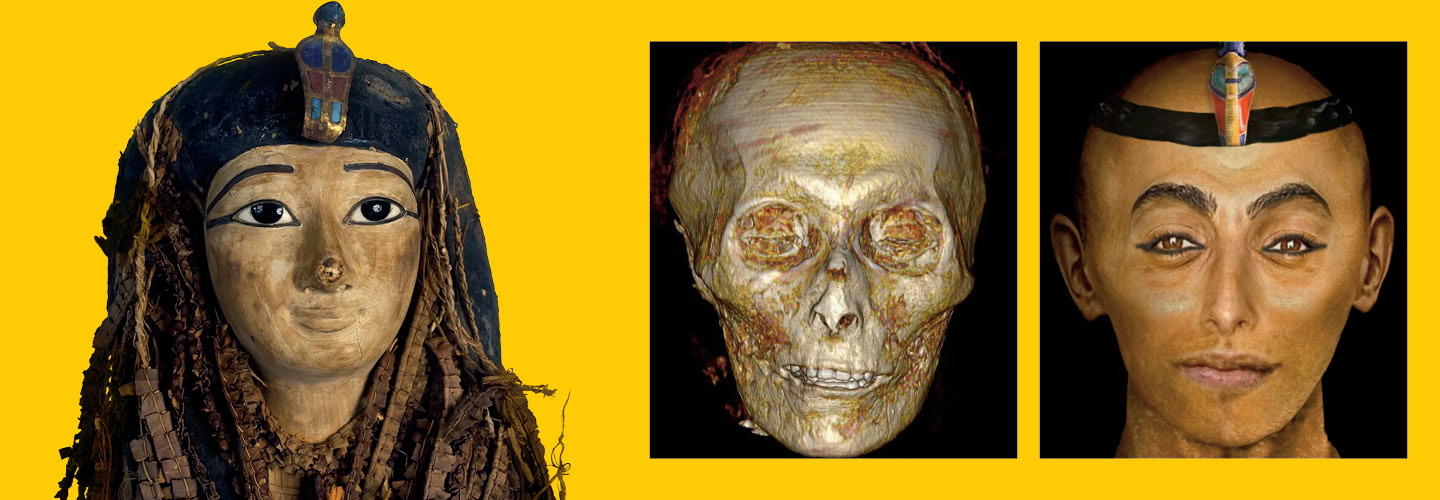Archaeologists found the mummy of Egyptian pharaoh Amenhotep I back in 1881, but for 140 years, no one wanted to disturb its “perfect” bandage wrapping. Now scientists are using CT scans, a type of medical imaging, to get a glimpse inside. The scans have revealed a great deal: Amenhotep, who ruled from 1525 to 1504 b.c., was about 5 feet, 6 inches tall and likely died of a bacterial infection or virus at age 35. Researchers also noted a couple of ways he was unlike other royal mummies: He had surprisingly nice teeth, suggesting good hygiene, and his brain had not been removed during the mummification process. These findings are useful to understand history, but they can also offer insights into current times, says lead author Sahar Saleem. “These are all important,” she told NPR, “for our modern understanding of the natural history of diseases, our modern understanding of civilization.”

CT scans of Amenhotep I’s mummy (right) revealed his skeleton and helped create an artist’s rendering of what he might have looked like. Chine Nouvelle/SIPA/Shutterstock (Amenhotep I, Skull); Curtis Ryan Woodside (CT Scan)
Text-to-Speech
